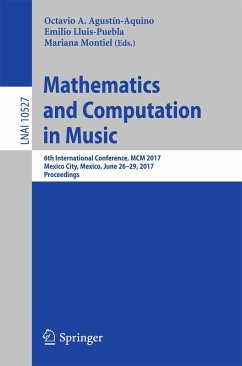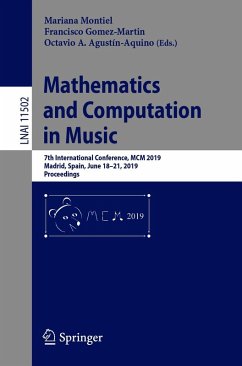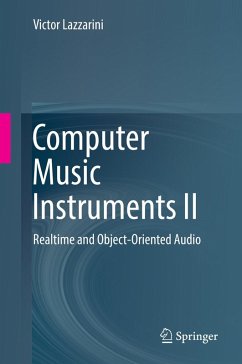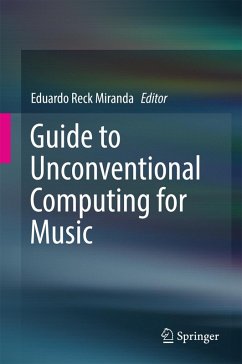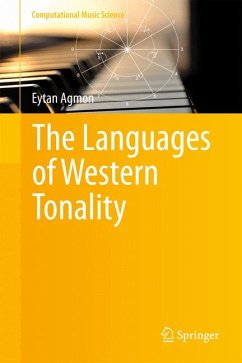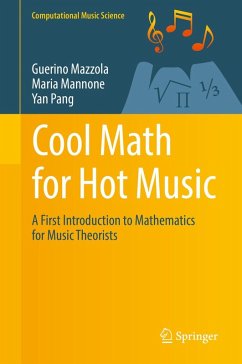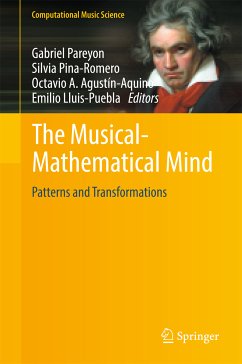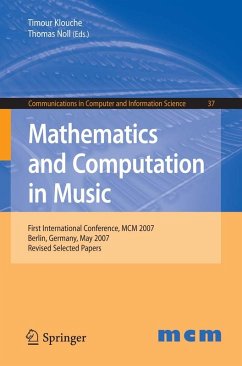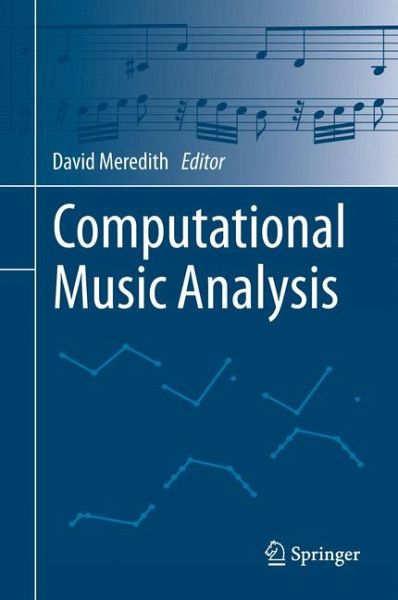
Computational Music Analysis (eBook, PDF)
Versandkostenfrei!
Sofort per Download lieferbar
104,95 €
inkl. MwSt.
Weitere Ausgaben:

PAYBACK Punkte
52 °P sammeln!
This book provides an in-depth introduction and overview of current research in computational music analysis. Its seventeen chapters, written by leading researchers, collectively represent the diversity as well as the technical and philosophical sophistication of the work being done today in this intensely interdisciplinary field. A broad range of approaches are presented, employing techniques originating in disciplines such as linguistics, information theory, information retrieval, pattern recognition, machine learning, topology, algebra and signal processing. Many of the methods described dr...
This book provides an in-depth introduction and overview of current research in computational music analysis. Its seventeen chapters, written by leading researchers, collectively represent the diversity as well as the technical and philosophical sophistication of the work being done today in this intensely interdisciplinary field. A broad range of approaches are presented, employing techniques originating in disciplines such as linguistics, information theory, information retrieval, pattern recognition, machine learning, topology, algebra and signal processing. Many of the methods described draw on well-established theories in music theory and analysis, such as Forte's pitch-class set theory, Schenkerian analysis, the methods of semiotic analysis developed by Ruwet and Nattiez, and Lerdahl and Jackendoff's Generative Theory of Tonal Music.
The book is divided into six parts, covering methodological issues, harmonic and pitch-class set analysis, form and voice-separation, grammars and hierarchical reduction, motivic analysis and pattern discovery and, finally, classification and the discovery of distinctive patterns.
As a detailed and up-to-date picture of current research in computational music analysis, the book provides an invaluable resource for researchers, teachers and students in music theory and analysis, computer science, music information retrieval and related disciplines. It also provides a state-of-the-art reference for practitioners in the music technology industry.
The book is divided into six parts, covering methodological issues, harmonic and pitch-class set analysis, form and voice-separation, grammars and hierarchical reduction, motivic analysis and pattern discovery and, finally, classification and the discovery of distinctive patterns.
As a detailed and up-to-date picture of current research in computational music analysis, the book provides an invaluable resource for researchers, teachers and students in music theory and analysis, computer science, music information retrieval and related disciplines. It also provides a state-of-the-art reference for practitioners in the music technology industry.
Dieser Download kann aus rechtlichen Gründen nur mit Rechnungsadresse in A, B, BG, CY, CZ, D, DK, EW, E, FIN, F, GR, HR, H, IRL, I, LT, L, LR, M, NL, PL, P, R, S, SLO, SK ausgeliefert werden.



